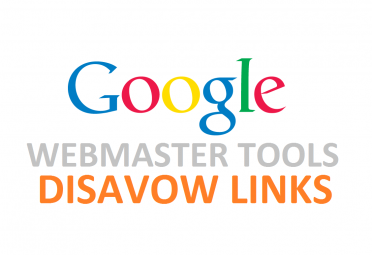In the era of Panda and Penguin, content marketing has become one of the most promising roads forward. A successful internet marketing strategy rests on the quality of your content. We have arrived at the point where content marketing is the best way of reaching your consumers.
Of course, content marketing was important even before Panda and Penguin made their appearance on the scene. Astute agencies were already harnessing the power of this strategy to expand their client’s reach. Still, most agencies saw content marketing as a top-tier marketing technique. It wasn’t something that they considered a prerequisite, and many of them just ignored it completely.
Why adopt a content driven promotional strategy, after all, when there were easier, cut and dried, and replicable methodologies already in place? The problem with this sort of thinking was that when ‘content marketing’ actually took its rightful place in the world of internet marketing, many agencies had no clue how to make it work successfully.
The “how” and “why” of content marketing still escapes many of these companies, and we have encountered several that are still murky about the whole process.
If we claimed that our content marketing campaigns always went smoothly for our clients, we would be lying. There have been some wrong turns, but over time we have accumulated a great deal of experience making it work for our clients. We believe we’ve learned enough to piece together an actionable content marketing guide to help other agencies get their act in gear.
So, from one agency to another, here’s a detailed look at the content marketing process.
What is Content Marketing?
To put it simply, content marketing is all about creating ‘great’ content, and promoting it through the appropriate channels.
Obviously, the difficulty agencies face is determining what ‘great’ content is. Yes, it should be well-written. Yes it should have no grammatical errors. Yes it should target a specific audience. Yes it should be original, and yes, it should be factual and well researched.
That’s a lot of “yeses,” but it’s only the tip of the iceberg when it comes to ‘great’ content. What it really needs to be able to do is add value. It must not only attract prospects, but also convert them into customers; and not just single time customers, but repeat buyers. It must also beshareable content: the kind of content that can go viral.
Here’s our process for building valuable content. First we understand what the client wants, as any good agency does. But then we go deep into the needs and wants of the client’s target audience, which is often ignored. We create content that is related to the product or message in question, but our core focus is on creating the kind of content that the audience wants.
If there is a solution that they want, we give it to them. If they are looking for facts, that’s what we offer. If they are looking for stats, then stats it is. Great content is always audience defined; this is what helps build trust between our clients and their target audience.
The rule of thumb that we follow is: “Give the audience what they want, not what you think they want.”
This is what great content is all about, and what allows it go viral…which brings us to our next topic.
How to develop great content that goes viral
Now that we’re clear on what great content actually is, let’s take things to the next level and make it go viral. There is no doubt that creating viral content is the single most important step of content marketing. Let’s take a look at how to make it happen.
- What are the types of content that can go viral?
Speaking from experience, it’s real time content that has the most potential to go viral. Our focus is always on news stories, case studies, experiences (both good and bad), controversies, strategies, solutions to common problems, actionable industry insights, facts and figures, contests, free tools and widgets, giveaways, open products reviews (which are in high demand), and anything and everything that your client’s customers are currently most interested in reading about.
Nobody likes feeling out of the loop, especially when it comes to subjects that they care about. The biggest influencers in your industry are going to care far more about brand new information than old news, even if it is trusted and established information.
Let’s take SEO as an example. In this niche, the most viral content will be about recent updates to the algorithm, fresh strategies that people haven’t seen before, and so on. This is what SEO enthusiasts want to read and share. Remember, if something is new, interesting, and surprising, it gets shared.
This brings us to our next question:
- How do you develop such content?
Two words: “Your Client.” Get your client involved in the content development process. Nobody knows more about the niche than they do. True, there will be circumstances where you understand the online market better than your client, but they are still the ultimate authority on the subject matter and what people in that industry care about.
Sit with your client, have long strategizing sessions, and make your client a part of the process. Remember: they have the most stake in the campaign. Help them understand that novel information, which is often proprietary, is by far the most likely to go viral. It’s often difficult for SEOs to gain access to this information, so make sure they understand why it’s so important.
Here are some of the questions that you can ask your clients, which will help them open up about their business:
- What are the problems their customers face while using their products/services?
- What’s their USP (Unique Selling Proposition)? This is crucial.
- What is their customer feedback while using their products/services?
- What are the latest updates in their industry?
- Where are the top blogs in their industry?
Content that provides solutions almost always works best. To solve problems for the target audience and influencers in the niche, you’ll need to understand your client’s business strategies. How to accomplish this will be different from client to client, and it is a skill that can only come from experience.
We recently used this kind of strategy when we put together our Post-Panda/Penguin Era Link Acquisition Strategies for SearchEngineJournal. We recognized that there are many SEOs looking for strategies with sustainable results in this new era of optimization. We offered the post as a solution to that problem. In the process, we shared some of our own personal strategies openly with SEJ readers. It’s the kind of content that is perfectly suited to going viral, and, according to our standards, it did.
Identifying the Right Content Distribution Channel
Creating the right content is a must, but you also need to zero in on a distribution channel for the content. You want to reach your audience through a channel that they already access habitually.
Here, again, the client enters the picture. Where does the client go to find solutions to their problems? Where do their customers go? Where do people who would care about their products and services go to solve their problems?
Once you have a list of viable content distribution channels, share it with your clients and talk to them about it. Then consider a format for the content, such as:
- Whitepapers
- Presentations
- Ebooks
- Blog posts
- Videos
- Email newsletters
- Doc
- Webinars
- Tutorials
- Guides
- Mobile/tablet apps
- micro sites
- landing pages
- Offline – magazines, newspapers etc.
Choosing the Right Distribution Channel, and Developing Content for It
Once you identify the most promising channels, you need to choose which one to actually use. Consider the following:
- Is the choice of channel sustainable, can you keep at it for the long term?
- Will a majority of your target audience be able to access the channel?
- Is it an “all-purpose” distribution channel, that you can keep using despite changing audience expectations, aspirations, and the emergence of new distribution channels?
- Are you thinking long term or short term?
- Are you looking at a single channel or multi-channel distribution?
What we usually like to do is diversify our distribution channels, rather than stick to just one or two. The choice of the channel depends on the market, the competition, and the client’s personal preferences. Think accordingly.
Suppose that you have chosen video as your medium of choice. In that case, you need to understand what kinds of videos are most successful, and what will be most helpful to the target audience. Successful videos generally showcase something remarkable, amazing, or funny. For it to be helpful to your client, it also needs to be related to their products and services.
As an example, if your client was an idea-generation firm, a video of a real-life brainstorming session would be a good choice. Such a video would be helpful for viewers, since it would enlighten them about the creative process. It would also build trust and reputation for your client by demonstrating how they do their work and their willingness to share it openly.
The video should endorse the company’s commitment to offering clients the best services, and this should be showcased in a manner that is really interesting, not “salesy.” In the case of videos, it’s about establishing an immediate personal connection with the audience.
Every distribution channel has its own specific content development requirements. Your content must live up to them in order to succeed.
Developing a Big Audience Outreach Plan
Once you have great content and the perfect distribution channel, it’s time to reach out to your audience with it. Audience outreach is an integral part of content marketing.
Here’s how you can develop a plan to accomplish this:
- Know your customers
- Know where they go to find solutions to problems like those solved by your client
- Try to reach out to the target customer through their preferred channel. Only then will they be able to find your content and consider it valuable
- Plan for the present, but future proof your plan as well
- Track your results; this is important since it allows you to fine tune your outreach plan
Use of Content Marketing Tools
Things get a whole lot easier if you use the plethora of content marketing tools available. There is something for everybody. The choice of tools depends on the kind of content you have chosen and the distribution channel, among other things.
Let’s take a look at some of these tools. We have divided these tools into three categories, namely content strategy, content production, and content promotion:
Content Strategy Tools:
Tools like the Content Strategy Generator from SEOGadget can help you do things like:
- Pull data from Google Insights for information about trends in your industry
- Use data from FollowerWonk and Topsy to locate promising content placement opportunities
- Find outreach opportunities
Content Production Tools:
Content production tools help you put together content more quickly so that you can expand your reach more effectively. This slide show does a good job of introducing some of these tools. They can help you:
- Set up easy to follow workflows
- Do outreach, content production, and social sharing in one place
- Get in touch with journalists
- Gain insight into what your target audience is reading
- Simplify blogging if you work with several writers, and more
Here are few of these tools. Feel free to mention more in the comments:
Contently: This tool allows you to choose your team of writers from the Contently network with respect to their specialization, what they have worked on and who they have worked for; you can manage your team and your content work flow in the cloud.
Go!Animate: Some ideas translate well into animated videos, and this is where this tool can help you out. You can create interesting animated videos, without sweating it.
YouTube Video Editor: Polish your raw footage; trim clips, add music, insert transitions, rotate clips and do a whole lot more.
Skyword: This is a complete content product platform which allows you to recruit writers, create content, promote your content socially, and lastly, measure its performance. All of this can be accomplished with minimal effort.
Follower Wonk: More than a content production platform, this allows you to do some solid keyword research, search for topics that are making waves in your niche, and find influencers. Produce top notch strategic content that you know will cater to your niche.
Content Promotion Tools:
These tools help you get the word out so you can reach as broad an audience as possible. Check out this Mashable post to learn more about them if you like:
Smashwords: A good pick if you have chosen to distribute content using eBooks. It can help you launch your eBook for free.
One Load: This is a great platform if you are choosing video distribution. This platform doesn’t just allow you deploy your videos across different video sharing sites and social networking sites etc, but it also help you keep an eye on them.
StumbleUpon: If you are looking for an inexpensive, pay-per impression form of content distribution, this will be a good choice.
Blogdash: If guest blogging is a part of your content marketing strategy, then this is a great platform to find bloggers, engage with them, or pitch your campaign to them.
Zemanta: This one is a link distribution platform and what it does is very simple. While you are writing your blog posts, it will analyze them and make suggestions for the addition of links and relevant photos. It also acts as a content promotion platform for relevant link building.
There are many others out there. A bit of research into the tools, their use, benefits, and efficiency will give you a good idea of what to use, when to use them, and how to make the most of the various content marketing tools.
And Finally……Go Viral!
Now that you have a content marketing strategy in place, all that remains to be done is getting it to go viral. Take advantage of social media, email marketing, outreach and so. If your content hits the mark, it should start propagating on its own.
Let’s take a look at what you can do to take your content to the viral stage:
- Use Social Media: but don’t just use social media, use it strategically. First, search for the social influencers in your niche: those authority figures that are looked upon with respect, and whose suggestions and opinions count in your target niche.
Make the rounds in your web space and social networks, and find those figures that are going to influence your target audience on Facebook, Twitter, Google+, and Pinterest. You need to engage with them and encourage them to share your content on their blogs.
What you are essentially doing is trying to leverage their respectability in their niche to promote your content; something that will help it go viral.
- Let your target audience know that you are publishing new content. Your social network is the perfect place to connect with your audience on a one-on-one level, so tell them about your newly published content here.
- Press Releases can work very well. A press release is, in itself, a content distribution channel. However, you can also use a press release to promote a piece of content. For example, you can really take your video to the next level if you supplement it with a press release. Think about it.
- Cite your previous content. Be smart and think ahead. Develop content that relates to your previous work, and then cite those posts in the new work.
- Email marketing is one of the more traditional ways of reaching out to customers and letting people know about the content that you have published. Start an outreach plan to get in touch with your target audience through emails.
These are just some of the approaches to help take your content viral.
Conclusion
The goal of content marketing is to improve your client’s reputation using content that gets shared and propagates on its own. This means you need to meet the needs of your client as well as those of their potential customers. Excessively commercial content rarely goes viral, while the type of content that is most viral rarely has commercial appeal. One of the most important things you will do for your clients is find the intersection between these two cultures.
Do you have anything else to share about content marketing strategies? If you liked this, we’d appreciate it if you passed it along. Thanks for reading!








































